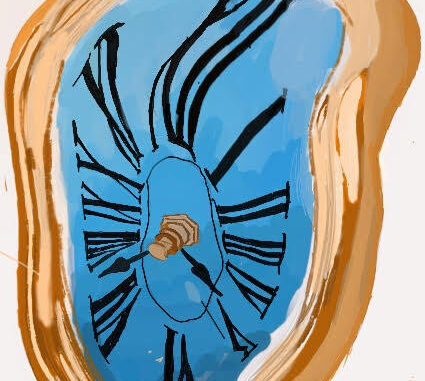
A few weeks ago, we experienced an infamous little quirk of our culture: Daylight savings time began. This day is otherwise known as “spring leap forward,” or as I fondly call it, “the worst day of the year.” There is nothing quite like the feeling of checking the time, seeing it is 1:56 a.m., then checking five minutes later and doing a double take because it is now 3:01 a.m. Nor is there anything quite like clawing out of bed at 7 a.m. for your 8 a.m. class to see the sun has yet to fully rise and feeling like death itself, a full hour of sleep cut out of your already dismal sleep schedule. Springing forward, I feel, is not a good time. So it may surprise you to hear that I am a huge advocate for changing the clocks.
Legislation in the country has recently moved to make daylight savings time permanent; i.e., one last forward shift before keeping it darker earlier and lighter later all year. Last year, the daintily named “Sunshine Protection Act” pushed for making this change the national standard and was unanimously approved by the Senate. However, the House did not act on the bill, and so it has been reintroduced to the Senate to be put into place next year instead.
Should the House and the Senate pass this bill, Oregon and 21 other states voiced that they would conform to the change immediately, thus putting an end to springing forward and falling back. As a result, the other states would be pressured to follow suit and Canada might not be long after.
The likeliness of daylight savings becoming permanent saddens me. It is true that having a 23-hour day is pretty rough, but having a 25-hour day? Absolutely worth the sacrifice earlier in the year. I treat daylight savings’ end in the fall as a sacred day. I go to bed early the night before and luxuriate in the extra hour of sleep.
Cell phone clocks have somewhat compromised the full daylight savings experience, but I leave my watch an hour ahead and do not change the clock in my car, so that I can be regularly pleasantly surprised by having an extra hour in the day. I get an unreasonably excessive sense of excitement when I look at my watch, stressed about all of my responsibilities, and realize a moment later that I have a full bonus hour. There is just something magical about daylight savings ending that tragically few people stop to appreciate, too busy complaining about how early it gets dark.
The beauty of our current system is that we do not have to worry about the early darkness of standard time for very long. Two-thirds of the year are spent in daylight savings (March through October), meaning we get the best of both worlds: a 25-hour day, and — for much of the year — the convenience and safety of it staying light late.
Another underappreciated aspect of the regular switching between daylight savings and standard time is what I call the small-talk factor. In trying and divisive times, what we really need is small and moderately stupid things to bring us together. If the dreaded Sunshine Protection Act is passed, how will we talk to people we do not know or are uncomfortable around? The weather can only get you so far. What will our world be when we do not have the clock on the wall in the classroom an hour off for four months of the year, throwing the students and professor off every time?
The sunshine does not need our protection. Our bizarre and arbitrary system of shifting our schedules twice a year does.
Subscribe to the Mossy Log Newsletter
Stay up to date with the goings-on at Lewis & Clark! Get the top stories or your favorite section delivered to your inbox whenever we release a new issue.

Leave a Reply